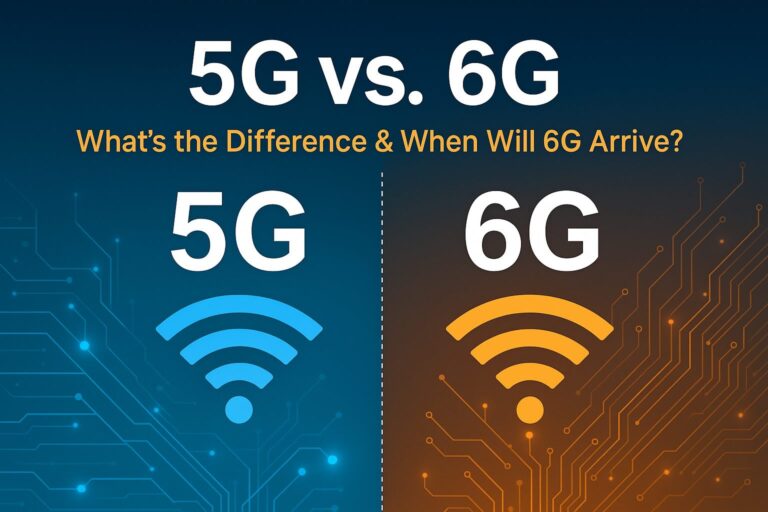The gaming industry is on the cusp of a revolution, driven by the advancements in Virtual Reality (VR) and Augmented Reality (AR). These technologies are set to transform the way we play, offering immersive experiences that blur the lines between the digital and physical worlds. This article explores the future of gaming through the lenses of VR and AR, delving into their differences, potential, and real-world applications through case studies.
Understanding VR and AR
Virtual Reality (VR) is a technology that immerses users in a fully digital environment. By using VR headsets like the Oculus Rift, HTC Vive, or PlayStation VR, players are transported into a computer-generated world where they can interact with virtual objects and scenarios.
Augmented Reality (AR), on the other hand, overlays digital information onto the real world. Through devices like smartphones, tablets, or AR glasses such as Microsoft HoloLens and Magic Leap, users can see and interact with digital elements superimposed on their physical surroundings.
The Potential of VR in Gaming
Immersive Experiences:
VR offers unparalleled immersion, making players feel as though they are actually inside the game world. This deep level of engagement is particularly impactful in genres like horror, simulation, and adventure games.
Physical Interaction:
VR encourages physical movement and interaction. Games like “Beat Saber” and “Superhot VR” require players to move their bodies, providing a more active gaming experience compared to traditional console or PC games.
Social VR:
VR also has the potential to revolutionize social gaming. Platforms like VRChat and Rec Room allow users to interact with each other in virtual spaces, creating a new dimension of social interaction.
The Potential of AR in Gaming
Integration with Reality:
AR enhances the real world by adding digital elements. Games like “Pokémon GO” and “Harry Potter: Wizards Unite” have successfully brought AR gaming to the mainstream by blending beloved franchises with real-world exploration.
Accessibility:
AR gaming is more accessible as it often requires only a smartphone or tablet, devices that most people already own. This lowers the entry barrier compared to VR, which requires specialized equipment.
Innovative Gameplay:
AR can turn everyday environments into gaming spaces. For example, “Minecraft Earth” allows players to build and explore Minecraft creations in the real world, blending the physical and digital seamlessly.
Case Studies
Case Study 1: Beat Saber (VR)
“Beat Saber” is a rhythm-based VR game where players slash blocks representing musical beats with lightsabers. The game has been praised for its immersive experience, physical activity, and intuitive gameplay. It has become one of the best-selling VR games, demonstrating the potential for VR to create engaging and physically interactive gaming experiences.
Impact:
- Popularity: Beat Saber has sold over 4 million copies, indicating strong consumer interest in VR gaming.
- Esports: The game has even entered the esports arena, with competitive tournaments showcasing VR’s viability in this space.
- Fitness: Players often regard Beat Saber as a fun way to exercise, highlighting VR’s potential in health and fitness.
Case Study 2: Pokémon GO (AR)
“Pokémon GO,” developed by Niantic, is an AR mobile game that overlays Pokémon into the real world through the smartphone camera. Players can catch Pokémon, visit PokéStops, and battle in gyms located at real-world landmarks.
Impact:
- Mass Adoption: With over a billion downloads, Pokémon GO brought AR gaming to the masses, showing that AR can engage a broad audience.
- Community: The game fostered a global community of players who participate in events and raids, demonstrating AR’s potential to create social experiences.
- Physical Activity: By encouraging players to walk and explore their surroundings, Pokémon GO promotes physical exercise and outdoor activity.
Case Study 3: Half-Life: Alyx (VR)
“Half-Life: Alyx” is a VR first-person shooter developed by Valve. As a continuation of the beloved Half-Life series, it was highly anticipated and received critical acclaim for its storytelling, graphics, and immersive gameplay.
Impact:
- High Standards: The game set new standards for VR gaming, showcasing the potential for high-quality, story-driven experiences in virtual reality.
- Hardware Sales: Its release significantly boosted sales of VR headsets, indicating strong interest in VR content from hardcore gamers.
- Industry Influence: The success of Half-Life: Alyx has inspired other developers to invest in VR game development, pushing the industry forward.
Case Study 4: Minecraft Earth (AR)
“Minecraft Earth” is an AR adaptation of the popular sandbox game Minecraft. It allows players to build structures and explore adventures in the real world through their mobile devices.
Impact:
- Creative Play: By allowing players to bring their Minecraft creations into the physical world, Minecraft Earth expands the possibilities for creative play.
- Collaborative Building: The game encourages collaboration, as players can work together on large-scale projects in shared AR spaces.
- Educational Use: Minecraft Earth has potential educational applications, as it can be used to teach subjects like geometry, architecture, and collaboration in an engaging way.
Challenges and Future Prospects
Challenges:
- VR: High costs of VR headsets and powerful PCs needed for optimal experiences can be prohibitive. Motion sickness and physical discomfort are also concerns for some users.
- AR: Battery life and performance issues on mobile devices, along with limited field of view in AR glasses, can hinder the immersive experience. Privacy concerns related to constant camera use must also be addressed.
Future Prospects:
- Technological Advancements: As hardware becomes more affordable and powerful, both VR and AR will become more accessible to the average consumer.
- Content Development: The creation of high-quality, engaging content will drive adoption. More developers are likely to explore these technologies, leading to a richer variety of games.
- Integration with Other Technologies: The combination of VR/AR with AI, 5G, and cloud gaming could lead to new and innovative gaming experiences. For instance, AI could enhance NPC interactions, while 5G could enable seamless multiplayer experiences in AR and VR.
Conclusion
The future of gaming is poised to be incredibly exciting, with VR and AR offering distinct yet complementary experiences. VR’s immersive environments and physical interactions contrast with AR’s blend of digital and physical worlds, providing diverse opportunities for innovation. As technology continues to advance, we can expect to see even more groundbreaking applications and games that will redefine how we play, learn, and interact in the digital age. By understanding and leveraging the unique strengths of both VR and AR, developers can create compelling experiences that captivate and engage players in ways never before possible.













I’m truly impressed by the profound understanding and superb ability to convey information. Your expertise is evident in every piece you write. It’s clear that you invest a great deal of effort into researching your topics, and that effort pays off. We appreciate your efforts in sharing this valuable knowledge. Keep up the great work!
Thank you so much for your kind words!
It’s always rewarding to know my writing resonates with readers. What aspects of the future of gaming are you most interested in? I’d love to hear your thoughts!
I’m truly impressed by your profound understanding and excellent way of expressing complex ideas. The knowledge you share clearly stands out in each paragraph. It’s evident that you invest a great deal of effort into researching your topics, and that effort is well-appreciated. We appreciate your efforts in sharing such detailed information. Keep on enlightening us!
Great piece here! I really learned a lot.
This was an insightful read! I got some great insights.
I am genuinely amazed by your keen analysis and stellar writing style. The knowledge you share clearly stands out in each paragraph. It’s obvious that you invest a great deal of effort into researching your topics, and the results is well-appreciated. We appreciate your efforts in sharing this valuable knowledge. Keep on enlightening us!
Great blog! I appreciated how you explained everything. Keep up the great work!
Thank you so much for your kind words and encouragement! 😊 We’re glad you found the blog helpful. Your support means a lot to us at FuturisticGeeks. Stay tuned for more exciting and insightful content! 🚀💡
Great blog post! The way you explained the topic was truly helpful. Thanks for sharing!
Thank you so much for your kind words! 😊
We’re really glad you found the article helpful. Your support motivates us to keep creating more content that adds value. Stay tuned for more futuristic insights coming your way! 🚀💡
— Team FuturisticGeeks